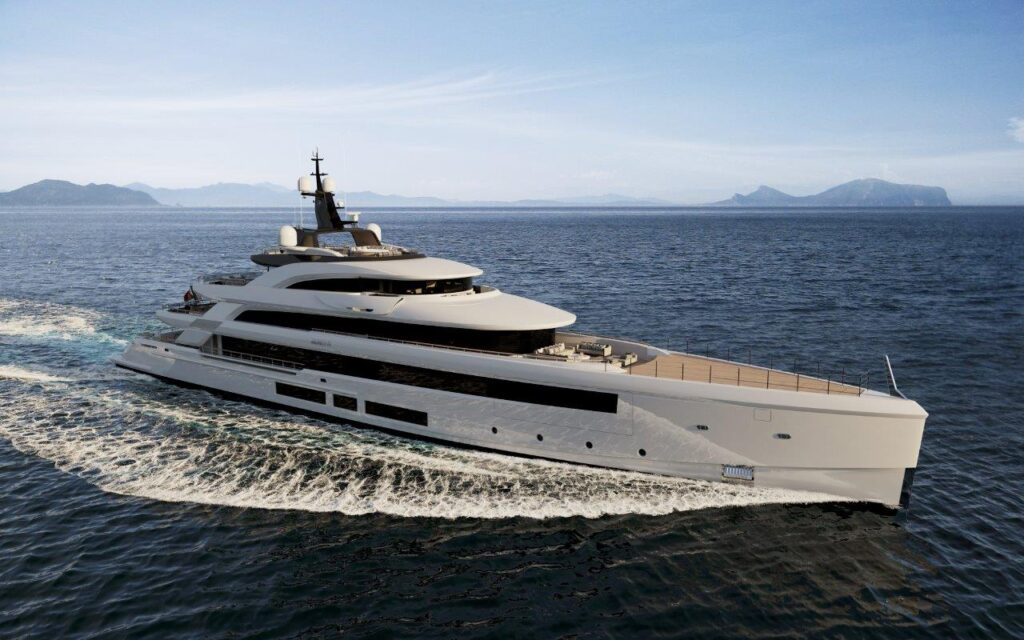
Benetti has introduced the new FB284, a 67-metre megayacht with six decks. The project saw the cooperation between the Benetti’s in-house engineers, architects and designers for the interiors and Giorgio M. Cassetta, who designed the exteriors and compartmentation. The yacht is the result of meticulous research to redefine new spaces, the concept around which the entire project has been developed to achieve excellent onboard liveability and significant rationalisation of the space available. FB284 is shaped by the evolution of the successful platform used to build Benetti’s four most recent mega yachts over 60 metres long, with 7 cabins for guests and 11 cabins for a crew of up to 19.
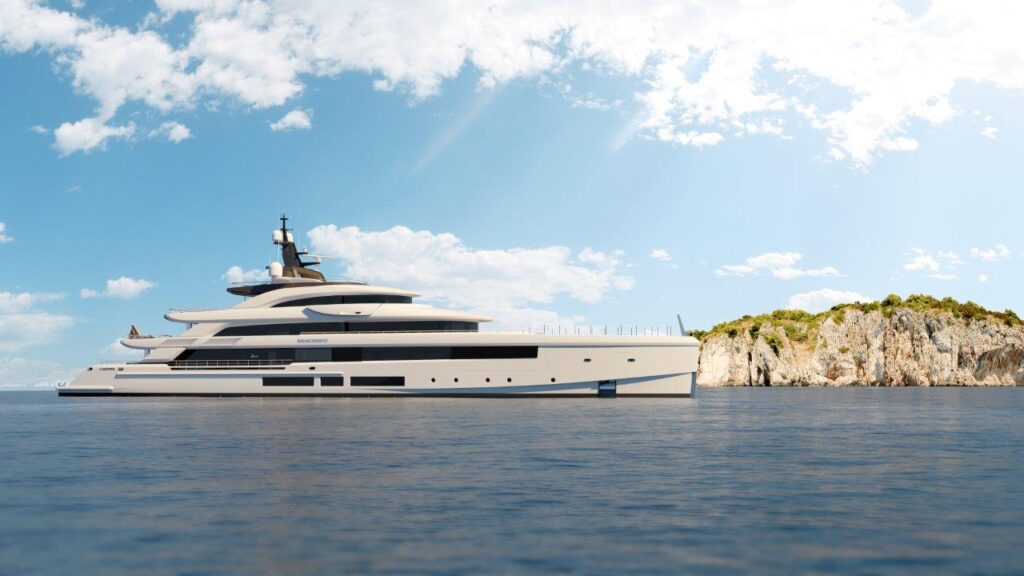
Benetti’s new 67-metre megayacht FB284 is for people who love navigation and want to do so while enjoying a refined and elegant design that satisfies aesthetic tastes and a love of beauty, as well as offering the utmost comfort and convenience in all onboard settings. This yacht isn’t interested in showy aesthetics, but instead wants to be part of a contemporary scene with a timeless horizon.
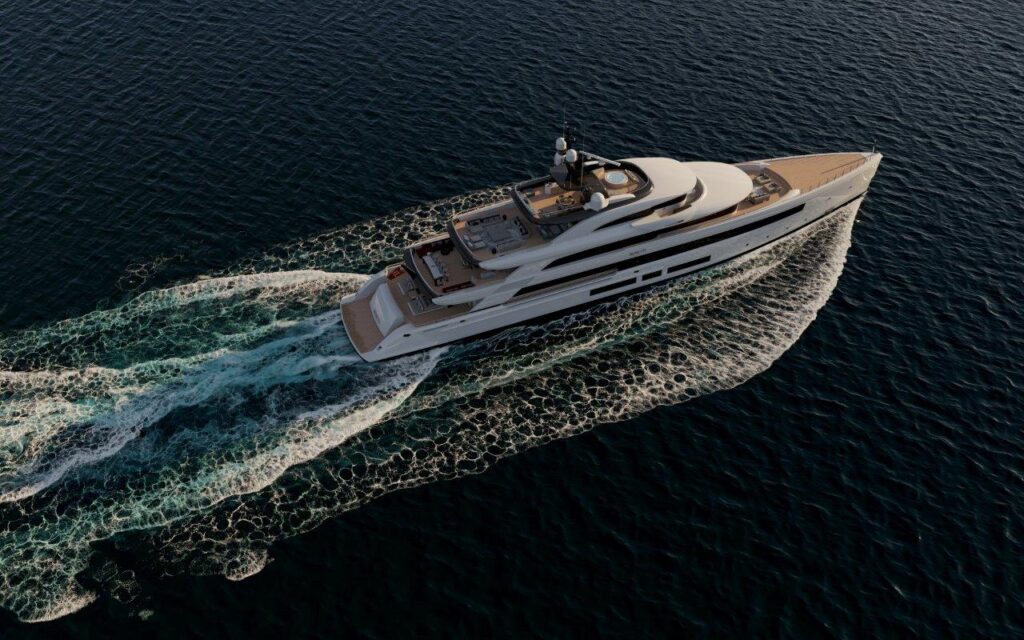
Benetti Chief Commercial Officer Sebastiano Fanizza explains: “If it’s true that buying a super yacht is an all-engrossing emotional experience, it’s impossible not to take account of the Shipyard’s key role in supporting the owner in areas where rationality plays a more important role. It’s here that we make the difference, offering the design flexibility and construction standards that come from proven, long-term experience. This is the result achieved together with Giorgio M. Cassetta’s design for FB284, a ship that’s different and makes her owner feel ‘at home’ by expressing strength in the form of extreme onboard liveability, becoming the perfect setting for memorable moments”.
This makes it clear how in this project a key role is played not only by style, but also by the functions of the spaces, whose purpose is to improve the quality of time spent on board, an objective that every owner both pursues and needs.
The entire project is based on the evolution of the platform on which the highly successful 63-metre Metis was built, which is also being used for the construction of 65-metre yachts FB270, FB274 and FB278, a 67-metre yacht known as Project Fenestra.
The exterior styling by Giorgio M. Cassetta highlights the horizontal development of the ship to emphasise her length. The meticulous search for harmonious continuity is put into practice by the almost seamless lateral lines that curves to streamline the mass of the superstructures.
The only elements that intentionally break the continuity of the boat’s lines are the bridge wings, whose discontinuity is emphasised by the surrounding surfaces, infusing the design with personality and demonstrating an exquisite combination of form and function.
The styling continues to revisit the design language developed by Benetti, acting as the guiding thread in the quest for an aesthetic in tune with how a big ship moves in the water, achieved by skilfully softening lines that are often only apparently straight. The decks sweep upwards at the stern, creating a sensation of lightness in the superstructure and more height in outdoor areas. The sheer size of this almost 70-metre yacht, emphasised by the clear-cut lines of the iconic vertical bow and the sleek hull, is immediately apparent in her impressive and commanding presence.
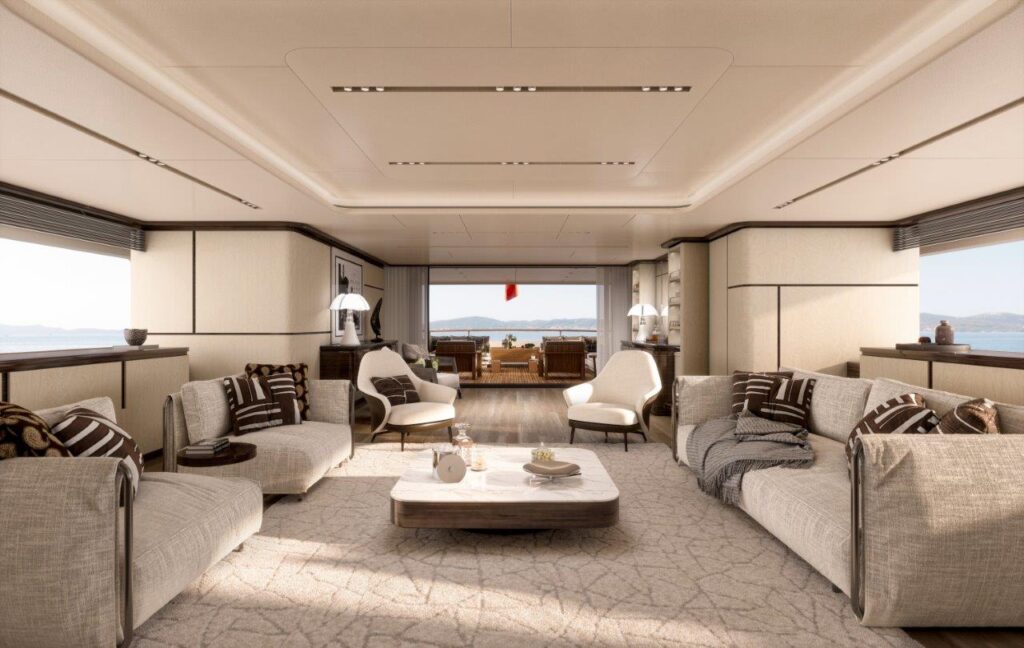
The interiors make reference to the evergreen excellence of ‘Made in Italy culture’, expressed through manufacturing of the finest quality set in a balance of elements that talk to each other. The materials chosen are ambassadors of a stylistic choice in favour of elegant, refined interiors, presenting an understated style that passes the test of time.
The woods used are Curly Maple in a soft colour similar to natural silk and black Macassar Ebony, with orange veining and a classical imprint. The chosen marble is Carrara White, which gives the surfaces a splendid gleam and contrasts well with the unqualified refinement of black Saint Laurent marble.
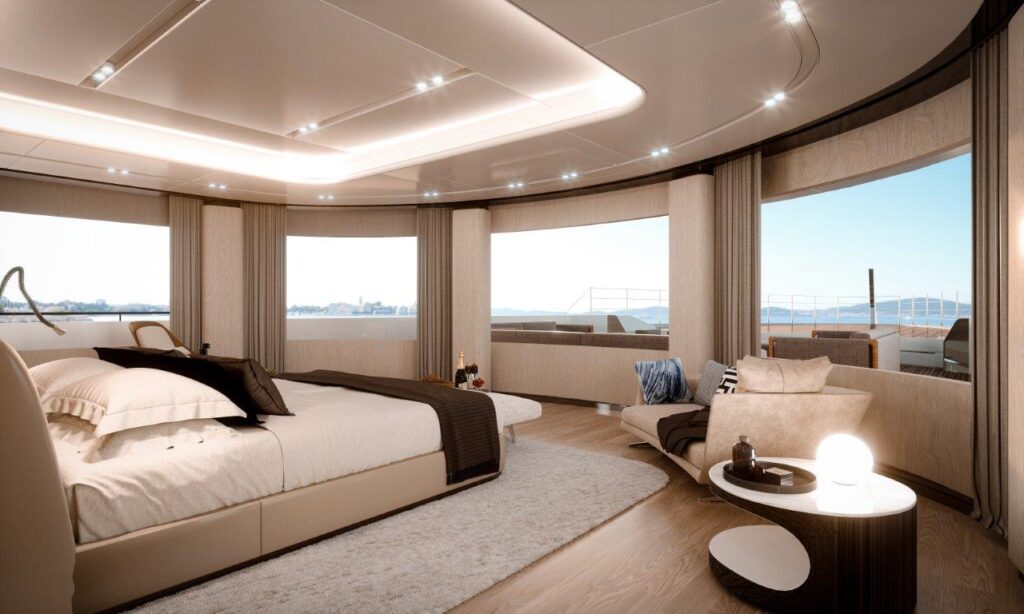
On the Main Deck, the cockpit is dedicated to guests, who it accommodates on elegant sofas and armchairs. A plate glass partition with a central door that slides open inside the superstructure separates the stern from the particularly long lounge, furnished with spacious sofas and a dining table seating 14. On the same deck are the spacious pantry and the big square-shaped galley preceding the two VIP cabins, both characterised by their windows and ample storage and wardrobe space.
The other four cabins are on the Lower Deck, which doesn’t contain the galley as is usually the case on boats this size, freeing up more space for cabins that can accommodate a crew of 17 or, in an alternative configuration, 19. The four officers can therefore each have their own cabin, which is an important factor in terms of crew comfort and therefore more satisfactory service on board. The spacious Beach Club in the stern, representing the ne plus ultra point of contact with the water, is also fitted with a side door. A hammam with a comfortably sized bath and shower are also available for guests to use. Depending on the owner’s needs, part of the area can also be fitted out as a gym.
The Upper Deck is dedicated to the owner and their social needs. The master stateroom in the bow has a private study and two separate bathrooms, one with a bath and shower, the other with a bath, and both with very long basin tops. Because of its position on board, the cabin offers a breathtaking view of the bow and the surrounding sea.
Amidship, lot of space is taken up by the pantry, a choice that expresses the desire to put the boat’s functionality front and centre. On this deck, a particularly spacious lounge lends itself to moments of relaxation and conversation among guests. Outside, a big dining table seating 14 precedes the sofas, which are arranged to frame the dining area and are the perfect place to enjoy an aperitif. Next to the dining area, the bar with its comfortable stools facing sternwards is perfect for breakfast or a quick snack, as well as being designed for evocative bartending or show cooking experiences.
The Bridge Deck is designed as the party deck. The shaded area can optionally be closed off to form a veranda fitted out according to the owner’s needs. The various outdoor lounge areas are served by an impressively sized bar with adjacent storage and pantry areas. On the same deck, the big captain’s cabin is positioned next to the ship’s command areas. A well-hidden outside stairway leads to the almost 90-square-meter Sun Deck, which offers a spectacular view from the bar. A Jacuzzi is installed in a podium that also does a good job of hiding its volume. The tub is slightly raised to eliminate differences in height during conversations between guests relaxing in the Jacuzzi and others sipping a cocktail while sitting comfortably on the sofa, in a clear example of how the spaces have been thought out to offer maximum ergonomic consistency between all the areas.
The same approach based on advanced volume optimisation has influenced the design of the Under Lower Deck, a sixth deck that delivers some real benefits. Careful rationalisation of the space available space translates into some serious extra areas to use both for technical purposes and storage. These areas make a big difference in terms of quality of life on board, particularly during long cruises.






